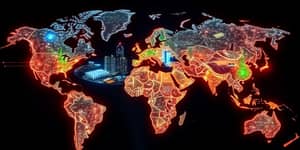Over centuries, central banks have been indispensable guardians of monetary order. Today, their responsibilities stretch far beyond traditional boundaries, driven by new economic challenges and rapid technological progress.
Introduction: From Tradition to Transformation
Central banks once focused almost exclusively on ensuring price stability and maximum employment. In the late 20th century, many gained political independence, anchoring their reputation on credibility and expert decision-making.
The aftermath of the Great Inflation of the 1970s and the Global Financial Crisis of 2008 prompted institutions like the Federal Reserve and the European Central Bank to broaden their mandates. Entering 2025, these entities must navigate a world of post-pandemic inflation surges, disinflation trends, and the urgent need for sustainable growth.
Mandate Evolution: Beyond Dual Objectives
Traditional mandates emphasized two core goals. In the United States, the dual mandate of price stability and employment guided policy. In the Eurozone, the ECB’s primary mission was to maintain inflation near 2%.
After 2008, financial stability became equally vital. The ECB introduced macroprudential supervision of banks, while the Fed incorporated stress tests and emergency lending facilities.
Debate continues on further expanding responsibilities. Should climate considerations or inequality metrics be enshrined alongside economic objectives? Proponents argue for integrated approaches, while skeptics worry about mission creep.
Recent Policy Developments and Interest Rate Trends
Between 2020 and 2023, central banks engaged in aggressive tightening to combat inflation spikes. By mid-2025, they have reversed course, cutting rates towards equilibrium.
These adjustments aim to reach a neutral rate that neither stimulates nor restricts economic activity. Forward guidance has become a crucial channel for shaping expectations, complementing traditional tools.
Challenges to Independence and Credibility
Political actors increasingly scrutinize central bank actions. In the United States, proposals within Project 2025 call for rolling back Fed autonomy, shifting authority to elected officials, and revisiting the gold standard.
High deficits and mounting public debt have intensified calls for central banks to play a more direct role in financing government budgets. Such developments risk undermining the political pressures on monetary policy and eroding institutional trust.
Maintaining a balance between collaboration with fiscal authorities and safeguarding autonomy remains a central concern for policymakers worldwide.
Technological Disruption: Digital Currencies and Tokenization
Innovation in financial technology has pushed central banks to explore Central Bank Digital Currencies. Many are conducting pilot programs to assess operational viability and potential risks.
At the core of this shift lies Central Bank Digital Currencies and tokenization. By placing reserves, commercial bank deposits, and government bonds on distributed ledgers, authorities anticipate faster settlement, improved liquidity, and enhanced policy transmission.
Simultaneously, cryptoassets and stablecoins challenge the traditional intermediation model. Central banks face critical decisions: coexistence, competition, or outright regulation.
Operational Tools and Communication Strategies
Today’s toolkit remains anchored in rate adjustments, quantitative easing or tightening, and forward guidance. Yet, execution demands greater nuance.
- Interest rate corridors and floor systems
- Asset purchase and sale programs
- Articulation of policy intentions through detailed statements
In 2025, the Fed’s Statement on Longer-Run Goals reaffirmed its commitment to clear communication and transparency of objectives. The ECB similarly emphasizes predictability in its policy calendar and press conferences.
Looking Forward: Debates and Unresolved Questions
As central banks adapt, several open questions shape the policy horizon:
- How quickly should interest rates return to long-run neutral levels?
- What is the optimal balance between price stability and broader social goals?
- How resilient are current frameworks against geopolitical shocks and fiscal imbalances?
- To what extent will tokenization reshape monetary operations?
These debates are not purely academic. Their outcomes will influence inflation expectations, investment decisions, and the global financial architecture.
Conclusion: Balancing Tradition and Innovation
Central banks stand at a crossroads. Their historic role as guardians of monetary order endures, yet new responsibilities demand creative adaptation.
From integrating climate risk assessments to rolling out digital currencies, policymakers must weigh benefits against potential threats to credibility. Navigating financial stability through macroprudential supervision while embracing technological change will define success in the decades ahead.
Ultimately, the evolving role of central banks reflects broader societal shifts. Effective institutions will be those that uphold stability, foster trust, and remain agile in an ever-changing world.
References
- https://www.caixabankresearch.com/en/economics-markets/monetary-policy/monetary-policy-2025-dialling-back-time
- https://blog.uwsp.edu/cps/2024/09/12/the-project-2025-monetary-policy-gold-standard-and-federal-reserve/
- https://www.bis.org/review/r250709b.htm
- https://www.brookings.edu/articles/the-fed-does-listen-how-it-revised-the-monetary-policy-framework/
- https://cebr.com/blogs/forecasting-eye-rates-of-change-are-we-starting-to-see-an-evolution-in-central-bank-mandates/
- https://www.federalreserve.gov/monetarypolicy/monetary-policy-strategy-tools-and-communications-statement-on-longer-run-goals-monetary-policy-strategy-2025.htm
- https://www.federalreserve.gov/monetarypolicy/2025-06-mpr-part1.htm










